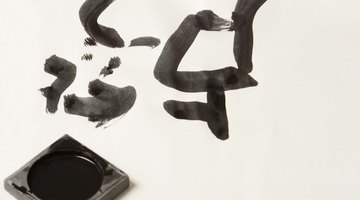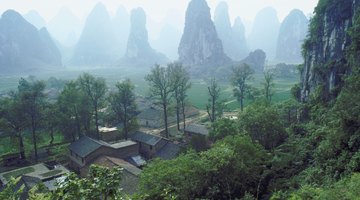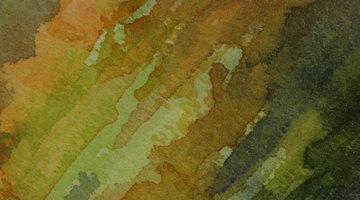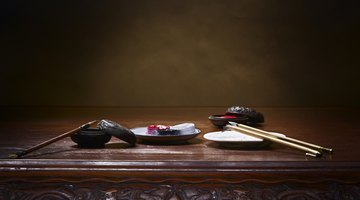Chinese Painting Facts for Kids
Table of Contents
Teach kids about the long history of Chinese painting with a few important facts. According to The Metropolitan Museum of Art, the late Tang Dynasty, which lasted from 618 to 906 A.D., was the turning point in which painting began to depict the inner heart and mind of the artist rather than complete realism.

Children can learn and understand key facts about the history and methods of Chinese painting.
Nature

Chinese painting has historically represented nature and people's relationship with the natural world. The geography of China is diverse -- including mountains, deserts and forests -- and artists have depicted these scenes in painting. Animals -- such as horses, fish, birds and tigers -- are also frequent subjects in Chinese painting.
Silk
Painters first painted on decorative and domestic objects, such as pottery and lacquer boxes. Later painting was done on silk cloth. Paper was invented in 100 B.C. in China and artists soon began painting on it. Rice paper, which is a thin -- near translucent -- material is usually associated with traditional Chinese painting.
Watercolor

Unlike Europe, where tempura and oil paints were historically used, classic Chinese painting is all watercolor or Chinese black ink, which is made from pine tree extract and glue. The black ink is diluted with water to create gray and black tones.
Landscapes
The late Tang Dynasty was the height of landscape painting in China, when artists created lifelike but imaginary images of nature. Mountains and trees were used to depict the artist's longing to be embraced by the natural world. Landscape painting became an important theme from this point onwards.
Calligraphy

The writing of Chinese characters is called calligraphy and is considered to be as important as painting in Chinese art and is actually a type of painting. Some watercolor paintings feature calligraphy only, written into poetry.
Paintbrushes
Traditional Chinese painting utilizes soft paintbrushes made from animal hairs. Wolf and sheep hairs are used in brushes with bamboo handles. The brush itself is thick, but tapers at the end. Artists utilize only eight brushstrokes in calligraphy and painting, the number eight considered lucky in Chinese culture.
Asymmetry
Chinese painters favored asymmetrical compositions with odd numbers. For example, objects in paintings were placed either left or right of the center. If an artist was painting a flower, an odd number of petals would be painted.
Signature
When a painting was complete, the artist would press a "chop," or a stamp-like signature onto the painting. This "chop" was carved from stone as a relief by artisans and unique to its owner. It was pushed into red colored ink and then pressed onto the artwork.
References
Writer Bio
Charong Chow has been writing professionally since 1995. Her work has appeared in magazines such as "Zing" and "Ocean Drive." Chow graduated from the University of Miami with a Bachelor of Arts in philosophy. She also received a Bachelor of Fine Arts from the California Institute of the Arts.
Photo Credits
- Jupiterimages/Goodshoot/Getty Images
- Jupiterimages/Goodshoot/Getty Images
- NA/AbleStock.com/Getty Images
- Photos.com/Photos.com/Getty Images
- K-King Photography Media Co. Ltd/Lifesize/Getty Images
More Articles



